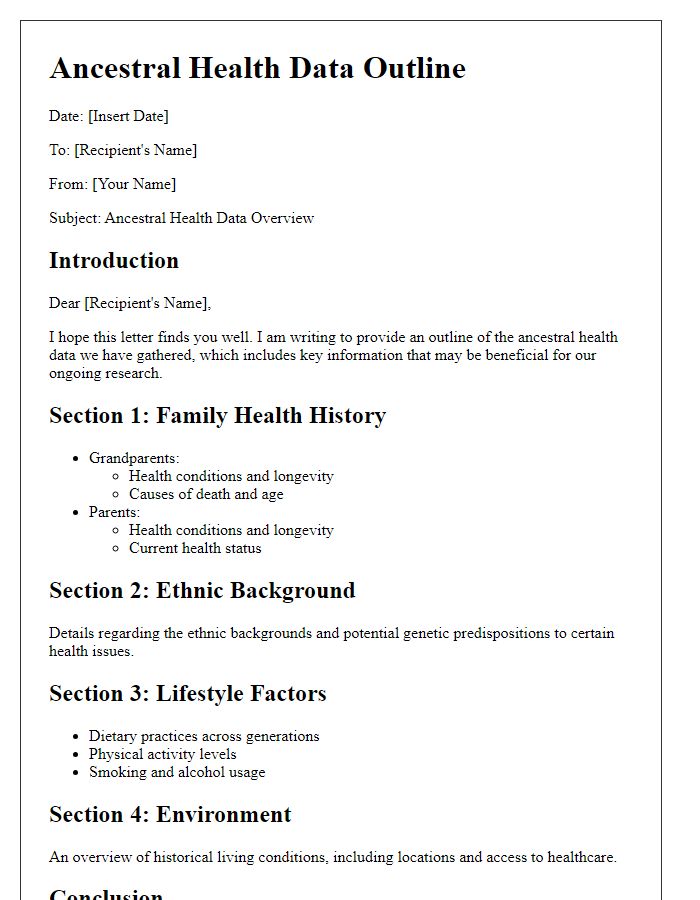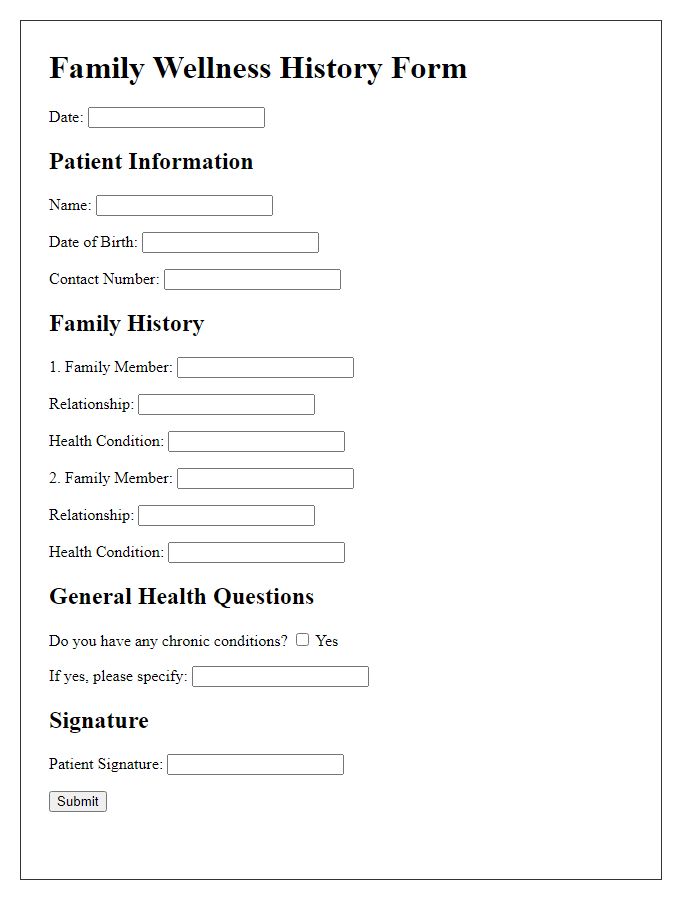Are you curious about how your family health history can impact your well-being? Understanding the medical backgrounds of your relatives can shed light on potential health risks and guide you in making informed choices about your own health. Crafting a letter to document this information not only helps in keeping records but also opens up important conversations with loved ones about their health journeys. Join me as we explore how to create an effective family health history letter that can benefit everyoneâread on for more!

Personal and Family Information
Documenting personal and family health history is crucial for understanding genetic predispositions to various medical conditions. Individuals should include names, ages, and health statuses of immediate family members, such as parents and siblings, as well as extended relatives, like grandparents and aunts or uncles. Notable health issues to consider include chronic diseases (like diabetes or heart disease), mental health disorders (like depression or bipolar disorder), and hereditary conditions (such as cystic fibrosis or hemophilia). Certain lifestyle factors, such as smoking or alcohol use among family members, may also provide insights into health risks. This documentation is essential for healthcare providers to create personalized preventive care plans and to assess risk factors associated with hereditary diseases in the family lineage.
Health Conditions and Diagnoses
A thorough family health history is essential for understanding genetic predispositions to various health conditions, such as diabetes, heart disease, and certain types of cancer. Notable conditions affecting immediate family members, such as hypertension or osteoarthritis, can provide insight into potential risks. Health diagnoses should include specific details like age at diagnosis, which influences risk factors significantly (for example, early-onset Alzheimer's before age 65). Additionally, ethnic backgrounds, such as Ashkenazi Jewish heritage, can lead to higher risks for specific hereditary disorders such as Tay-Sachs disease. Documentation should ideally encompass three generations, capturing both maternal and paternal sides, to ensure comprehensive risk analysis.
Genetic and Hereditary Conditions
Genetic and hereditary conditions often manifest in families, influenced by factors such as family health history, lifestyle, and environmental aspects. For instance, a family history of certain conditions like breast cancer (BRCA1 and BRCA2 gene mutations can elevate risk) or heart disease (such as familial hypercholesterolemia, affecting cholesterol levels in multiple generations) can indicate genetic predispositions. Tracking genetic conditions may facilitate early intervention and informed healthcare decisions. Notable events like cancer screenings, blood pressure monitoring, and genetic counseling sessions in family members should be documented meticulously to provide healthcare providers with a comprehensive perspective on potential health risks. Regular health check-ups serve as proactive measures, increasing awareness and encouraging preventive strategies within a family unit.
Lifestyle Factors and Habits
When assessing family health history, it is crucial to consider lifestyle factors and habits that influence overall well-being. For instance, dietary choices, such as the consumption of fruits, vegetables, and processed foods, affect health outcomes significantly. Physical activity levels, quantified by the frequency of exercise sessions per week, play a vital role in maintaining cardiovascular health. Tobacco use, with statistics revealing that approximately 14% of adults in the United States smoke, poses increased risks for various ailments, including lung cancer. Alcohol consumption patterns, particularly binge drinking behaviors, impact liver health and exacerbate genetic predispositions. Understanding these varied lifestyle factors can provide valuable insights into the potential health risks faced by family members, aiding in proactive health management and future prevention strategies.
Medical History and Treatments
Documenting family health history is crucial for understanding potential inherited medical conditions. This involves gathering information on conditions such as diabetes, hypertension, heart disease, and cancer, prevalent in familial lines. Notable events include premature deaths due to these ailments, with emphasis on ages of onset and treatment methods utilized, such as insulin therapy for diabetes or chemotherapy for cancer. Geographic locations, like rural areas with limited access to healthcare or urban settings, can significantly influence health outcomes. Collecting this information for immediate family members, including grandparents, parents, and siblings, as well as extended relatives, provides a comprehensive view of genetic predispositions, guiding future health decisions and screening guidelines.













Comments